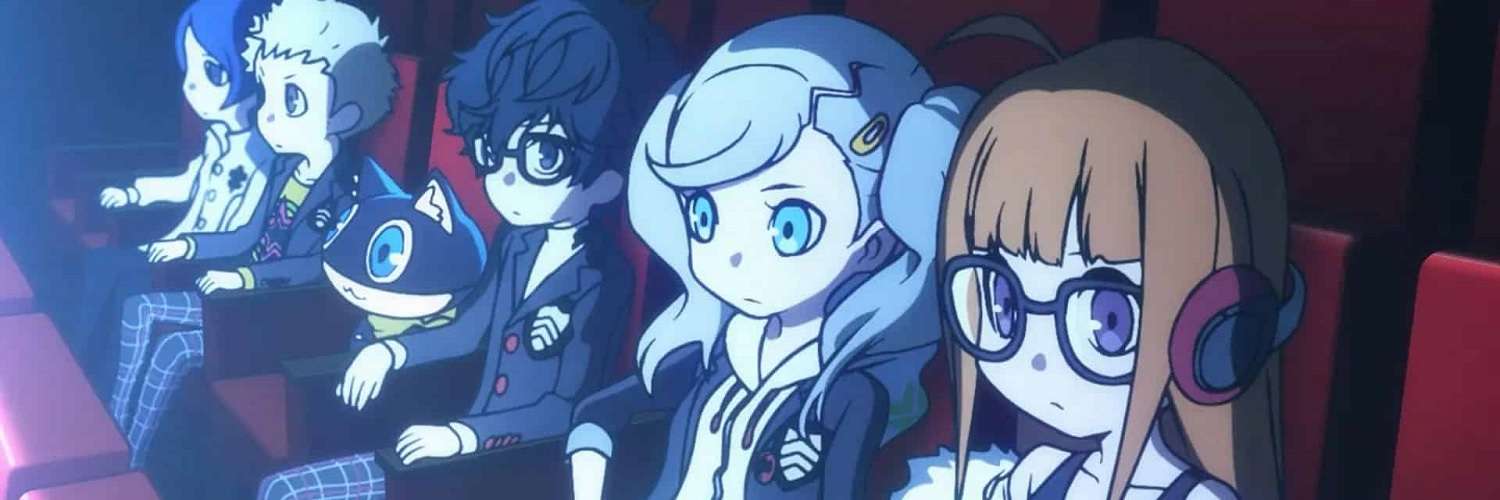
Persona Q2: New Cinema Labyrinth 3DS Review
It is fair to say that Persona Q2: New Cinema Labyrinth is more Persona Q, and that’s a great thing. The blend of Etrian Odyssey and Persona worked well for the initial game, Persona Q: Shadow of the Labyrinth, and it once again works splendidly here with the experience from the first game coming through to make a better title. It might not be a true Persona game that Nintendo fans were hoping for after seeing Joker appear in Super Smash Bros. Ultimate, but the 3DS is once again playing home for Atlus to stick a spin-off on. With this game being the 3DS’ last big title that we know about, it is a lovely game to sign off with on Nintendo’s brilliant and long surviving 3D featured handheld.
In this sequel – a stand-alone story enabling any player to jump into it without past experiences with the series – the characters from Persona 5 are here from the beginning, as the team find themselves transported from Mementos into another dimension. There is a magical theatre screen featured in this dimension that enables the heroes to jump into the current film on show, similar to how the Investigation Team could go through the TVs in Persona 4. The team have no idea why they are here or how they can get out. They also are missing two members, who appear to be trapped in the film, causing our heroes to jump back in to save them on their first adventure. Among the Phantom Thieves are two newcomers for the story, these are Nagi and Hikari, one who is the theatre’s owner, while the other appears to be a shy person who enjoys going to the cinema. One other entity is in the cinema is a random black being that controls the projector, which sets the theme for each of the game’s dungeons. This black being also creates keys by spewing purple stuff from his eyes – yep, very bizarre.
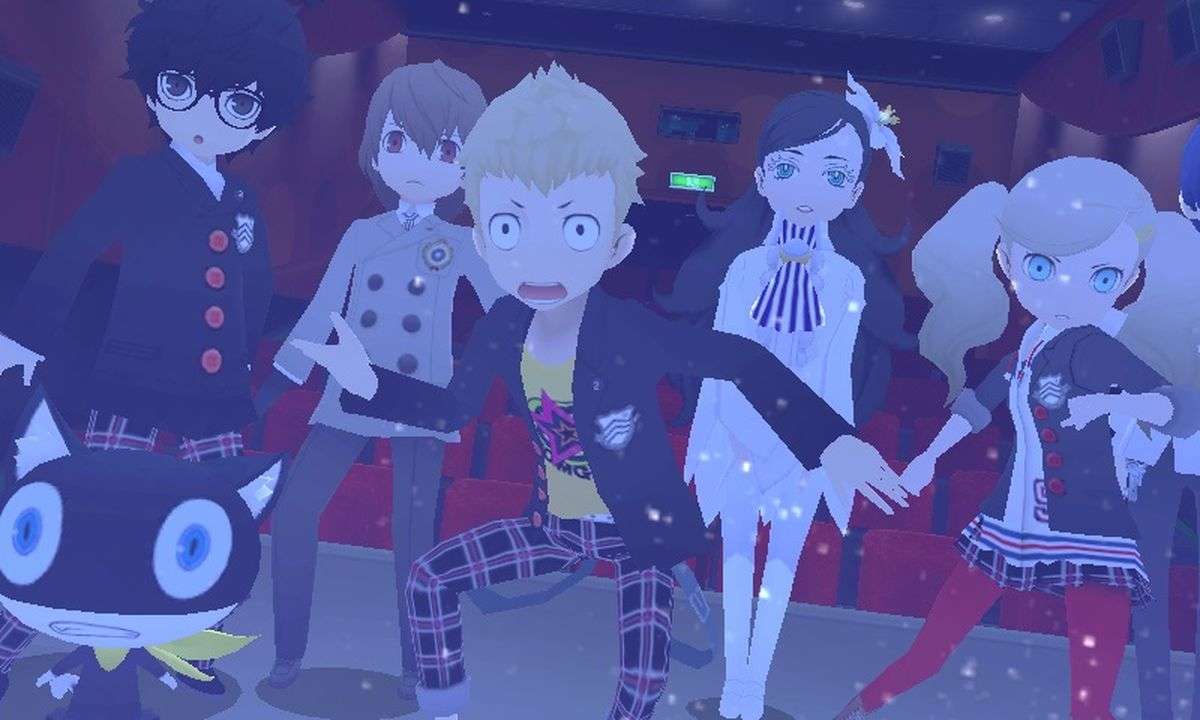
There is a distinct difference between the two Q games and how they handle the cast. While Persona Q was a crossover between Persona 3 and Persona 4, feeling as if those two titles were given an even focus with the two routes that centred around each game, the sequel comes across as the Phantom Thieves being the centre piece, and the Persona 3, Persona 4 and the Female Persona 3 main character are less key to the main plot, being gradually introduced at different points in the game as each new film dungeon is unlocked. This might upset some of the big fans of those two previous games, but it should be known that when they arrive, they feel like old friends returning, as all their mannerisms and personalities are kept intact, just now even more exaggerated with the cute chibi visuals. For newcomers, a lot of this stuff will fly right over their heads, but no doubt those people will find a favourite out of the many available.
The combination of Etrian Odyssey and Persona will be clear to see for anyone who has played both those games. Just like Persona Q, the sequel once again sets its main gameplay design around Etrian Odyssey and the first-person dungeon crawling mechanics. A lot of time is spent exploring dungeons, making way through multiple floors until the final boss of the dungeon has been discovered and beat. These dungeons are grid-based, meaning movement is restricted, rather than free moving, and it’s certainly not open world, since walls block most of the map to give a sense of exploring dungeons, being stuck in a maze trying to get out. Grid movement does not alter exploration in the traditional sense, it’s a different way to move, as tapping the D-pad makes the character move forward once, while holding it will constantly keep the player moving. Dungeons become complex and long as progression is made further into the game that it can be easy to forget where things are, making it harder to return to specific areas to open a once locked treasure chest or access a new opening. Thankfully, that is the whole point of the game design behind the Etrian Odyssey titles, as one of their big draws is the idea of a sense of discovery as the map is revealed.

Persona Q2, and in essence the Etrian Odyssey family, are games that make sense to be on Nintendo’s dual screen handhelds, due to the foundation that Etrian Odyssey was built upon with the second screen on the DS, its touch screen and the game’s trademark map drawing mechanics. As the player moves across each grid, the map will highlight the square to show that it has been explored, but it does not add anything else. The game puts the emphasis on the player to keep the map updated by drawing lines to represent walls or dropping icons to show where shortcuts, chests, doors, and other points of interest are located. Plotting is easy, due to the game’s use of square-based movement and the stylus. It can feel daunting at first, and I am sure to some people this sounds like a chore, but it does become a helpful tool to find missed chests or locations when returning to a dungeon, as a map exploration percentage is always on display in the top corner of the bottom screen.
Mapping is something Persona only fans will have have to get to grips with, but Atlus has made the system user friendly by adding an option that enables the game to auto map out the walls for the user. What this means for the player is they just need to mark the shortcuts or chests. It might not seem like much, but drawing out the lines for walls is the most time consuming part of mapping, so this quality of life improvement will help people who haven’t touched Etrian Odyssey before.
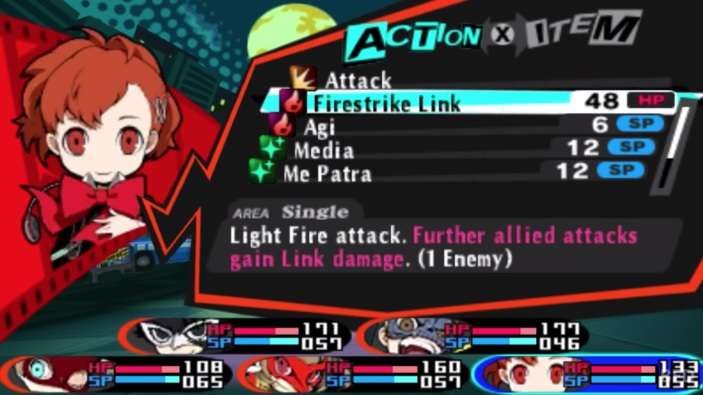
Looking at the bottom screen is something players will do often, as not only is it a map, but it also displays powerful enemies, known as Film Obscurite Etendu (FOE) as they move about. Normal enemies do not appear, as these are random battles, indicated with a number that gets closer to 1 as the player moves, once it’s on 1, it means that a fight could happen in the next few square movements. FOEs, on the other hand, are dangerous enemies, like mini bosses, that should be avoided unless the team members are a good level above the standard enemies in the dungeon. FOEs are usually placed as a deterrent to stay away from a place by throwing them into a puzzle. An early example is in the first dungeon where FOEs are frozen in place unless the power to the security lights are turned off. When this happens, the FOEs come to life and begin patrolling a set path. FOEs can never come off their patrol line, making them easy to avoid if you stay back moving forward and backwards on a couple of spaces to see how the FOEs move around the local area.
Most of dungeon exploring is based on the Etrian Odyssey concepts, but when it comes to the battles – be it fighting FOEs or standard enemies – is where some of the elements from the Persona games creep in. Combat remains from a first person perspective and turn based, keeping the Etrian Odyssey stance, but using the Persona battle elements, which includes basic attacks and skills that use MP or HP to use a persona to attack. Enemies are still susceptible to weaknesses for critical hits and knockdowns. These are all enemies from Persona games, so seeing a Daring Gigas (he looks like Hulk Hogan, Brother!), and finding its weakness will be easy to achieve for the knowledged fan. Unlike Persona, there are no extra attacks for landing a critical hit or exploiting a weakness. What happens now is that the character that hit the damaging shot is put into boost mode, meaning their next turn to attack is stronger and free from any MP or HP cost, a great way to use the most powerful abilities without draining metres. If all enemies are in their knockdown status, then the classic all-out attack can be performed where all squad members pile on the enemies for massive damage. Discovered weaknesses are logged and highlighted on the skill selection, making it easy to remember what is weak against what without having to select the enemy or ask the navigator, Futaba Sakura, to reveal the enemy stats. It makes for an uninterrupted gameplay experience.
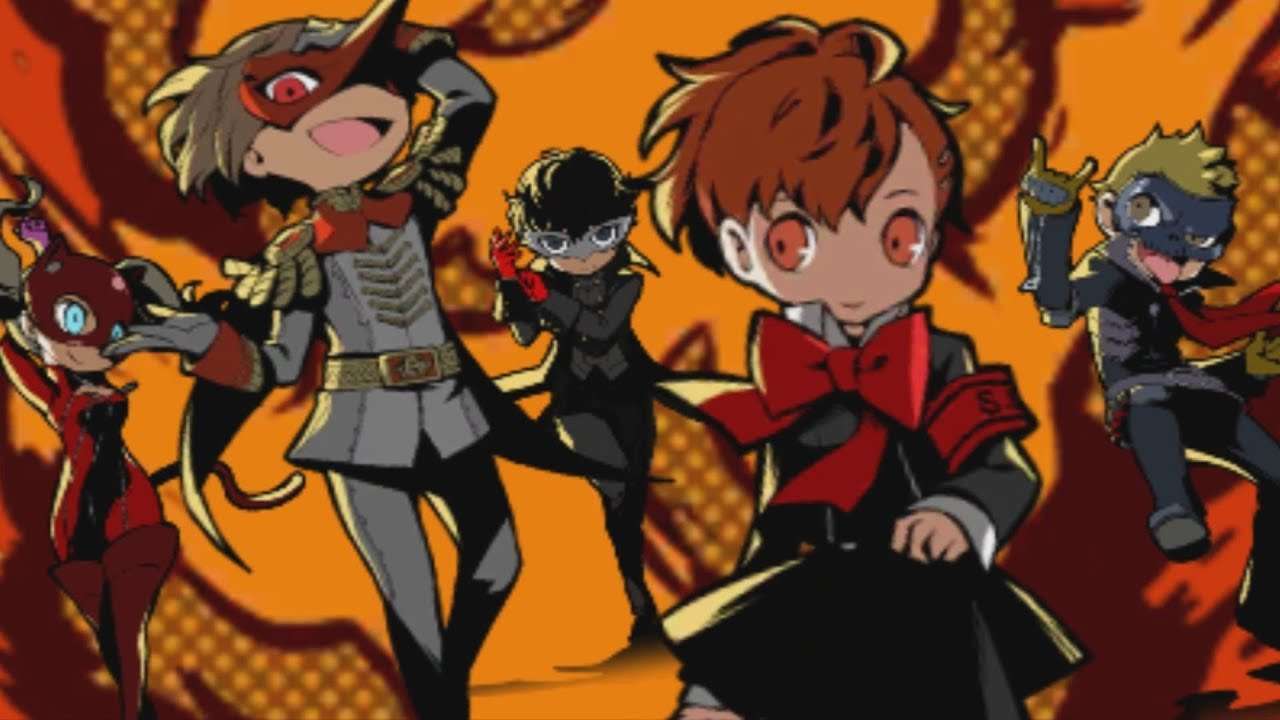
Atlus’ Etrian Odyssey is known for offering a decent challenge, and even Persona Q had some difficulty spikes during its campaign. To help people who might be fans of Persona but worried this game will be too difficulty for them, there are five difficulty options available, from Safety to Risky, which can be changed when not in a dungeon. Safety is mainly for story goers, as it includes a feature that enables unlimited revives. Risky, on the other hand, forces the use of the main character Joker, and is game over if Joker dies, plus, you cannot escape from FOEs unless it’s the use of the item Vanish Ball. It’s nice that the developers took feedback about the original game, since it is suppose to be bringing fans of these two games together – this seems like a good way to accommodate both, allowing them to enjoy the game at their choice of challenge.
And there are many other aspects for Persona fans to enjoy in Persona Q2. Presentation and story delivery is very Persona, with many dialogue scenes between characters before chunks of dungeon exploring. With so many characters available, I can see people struggling with who should be in such a small squad of five when there are 30 characters available. Each one comes with their persona from the respected games, but each character can now have a sub-persona to gain additional traits and abilities. Personas can be randomly earned as rewards from battle, and these can be fused together in the velvet room to make stronger personas. Lastly, while there are no social links featured in this game, there are elements of character interactions. These are called Special Screenings, where a short sub story places the team within a small section of an existing dungeon with a new objective to finish, such as Naoto and Futaba on a hunt for a fake police officer or collecting a cinnamon fern so the chefs of the cast can create a new snack recipe. Doing these special screenings unlocks new attacks between the related characters, acting akin to maxing out social links in the Persona games. The developers have done well to bring even more Persona into the Q series, which is one of the reasons I prefer this sequel over the original entry.
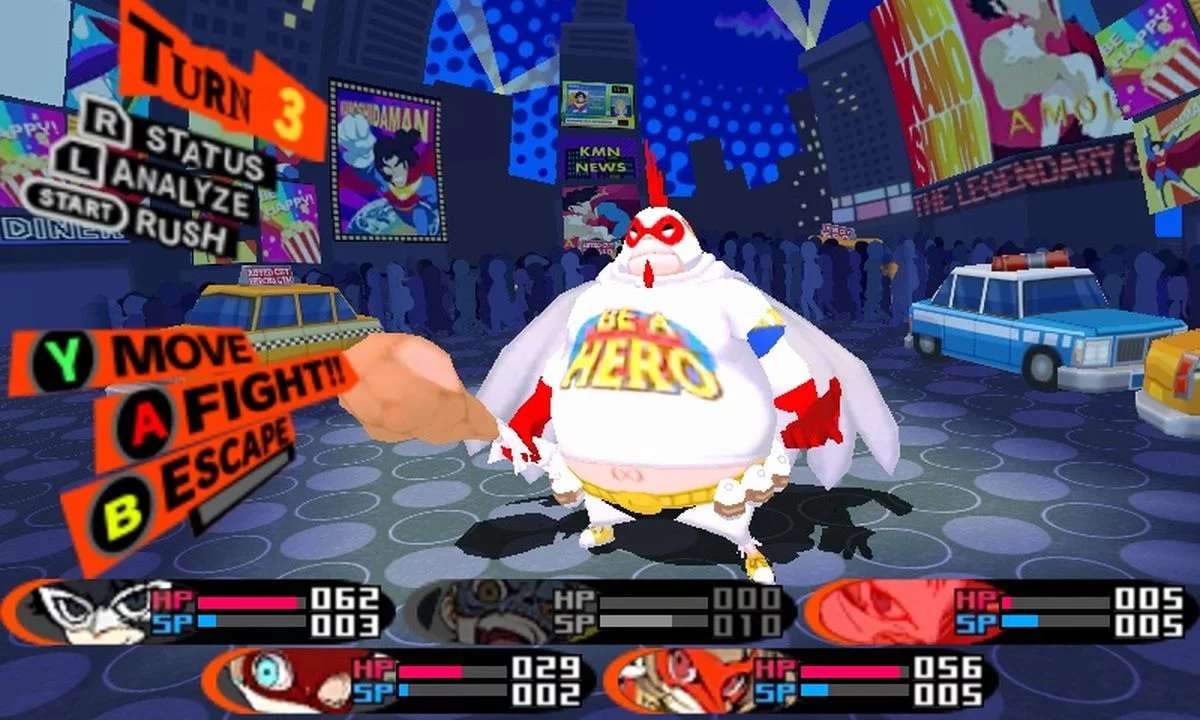
Nintendo’s 3DS is now eight years old. That time-span means the tech is ancient in 2019, and so while the handheld will not be churning out amazing visuals, it still manages to offer something pleasing on the eyes, thanks to pushing an art style over realistic graphics. The chibi characterisations for the models do not have to be as detailed, but this style displays some charming animations that uphold the designs of the originals, while still bringing a new visual look that is so adorable. This is demonstrate more in the animated cutscenes, with models that are so cute, they could easily be plushies that I would be willing to purchase. The game manages to perform a lot of its cutscenes in real time, which does show the weakness of the 3DS, as the game’s 3D models suffer from jaggies. Thankfully, the small screen helps this issue to not be as problematic if it was blown up on a 40 inch TV. Unsurprisingly, this is another game where the 3D aspect of the 3DS isn’t used, which is now a common theme in these later 3DS releases. It signals the end of a cool feature that will probably not make a return on Nintendo’s next pure handheld device.
Presentation remains bright and loud, and while the beautiful style that oozed throughout all aspects of Persona 5 doesn’t emerge in this game’s menus and user interfaces, it manages to remain very “Persona” that anyone familiar with the games would immediately notice. Dungeons are colourful, but because of their repetitive nature, their style becomes flat as it doesn’t change up much between the floors of the same dungeon. On the side of music, once again, this is a quality soundtrack filled with fantastic original tracks and music carried over from previous games. The hardware may be old, but that doesn’t stop the music from being as great and catchy as the Persona series has become known for.

As I said in the beginning, Persona Q2: New Cinema Labyrinth is more Persona Q, but this time the implementation of the concepts of both games is better done. It still is a game aimed as fan-service, with its charming presentation, solid writing, great interactions between characters, and a brilliant soundtrack, but also this time it stands more on its own as being a great dungeon crawler with a challenging combat system that upholds the weakness concepts from Persona. With Etrian Odyssey as a series that established itself on Nintendo’s first dual screen system, using the hardware to its strengths to create something unique on the go, it seems fitting that we are saying goodbye to Nintendo’s evolution of that with the 3DS with this seemingly last big release for it. Persona Q2: New Cinema Labyrinth might not be the best RPG on the Nintendo 3DS, but it is a fitting sayonara for what could be debatable as one of Nintendo’s best handheld systems.
